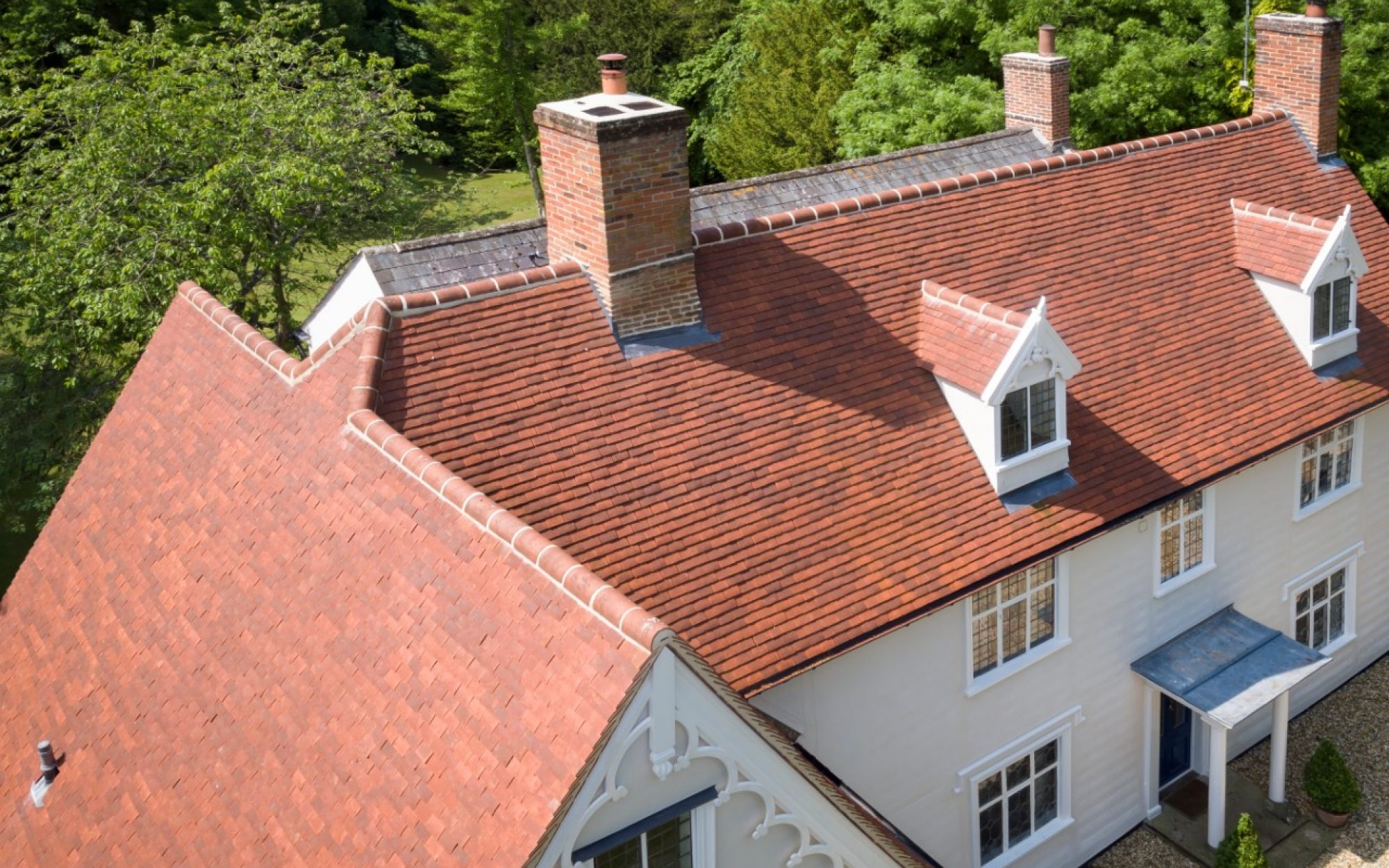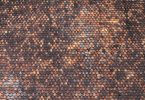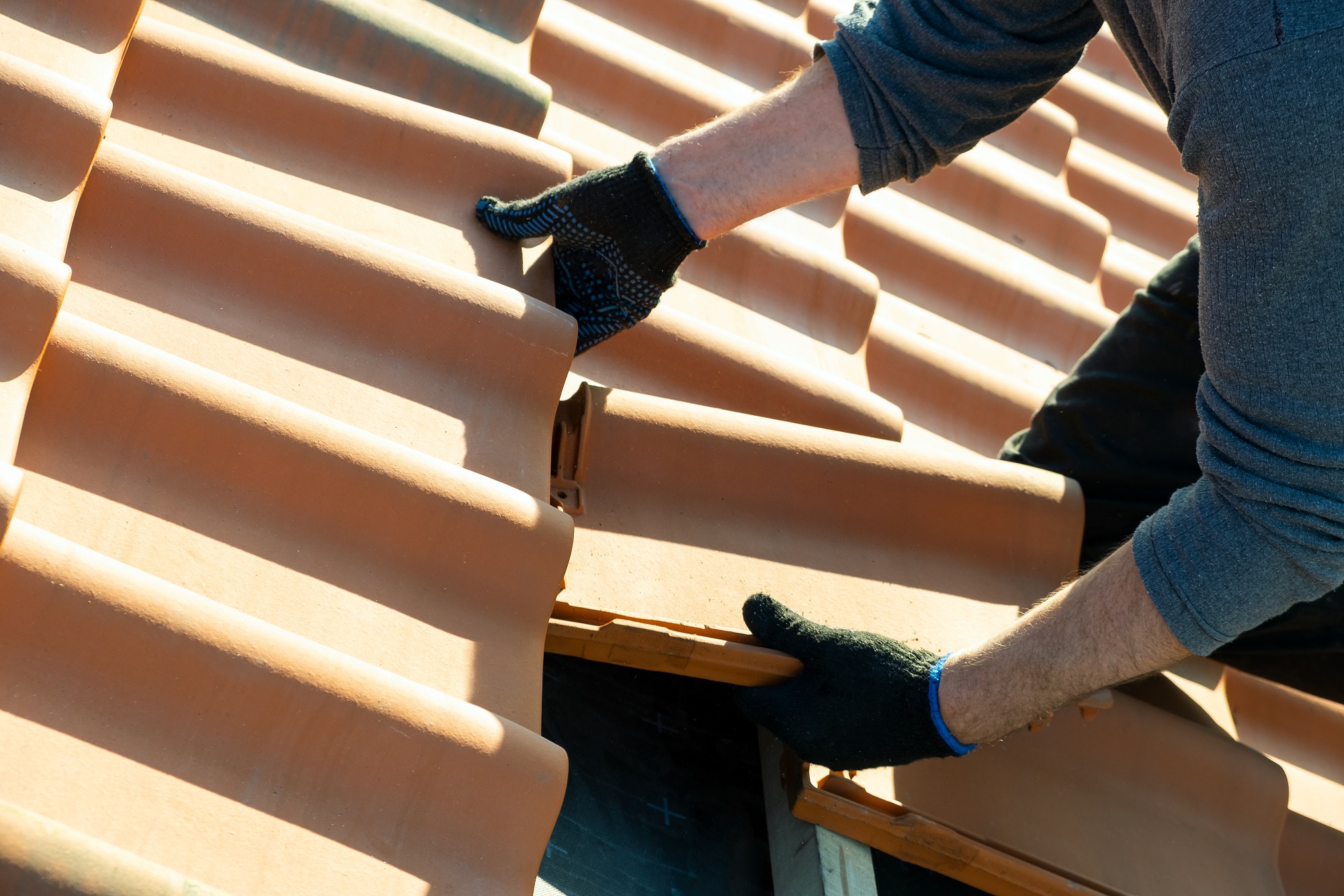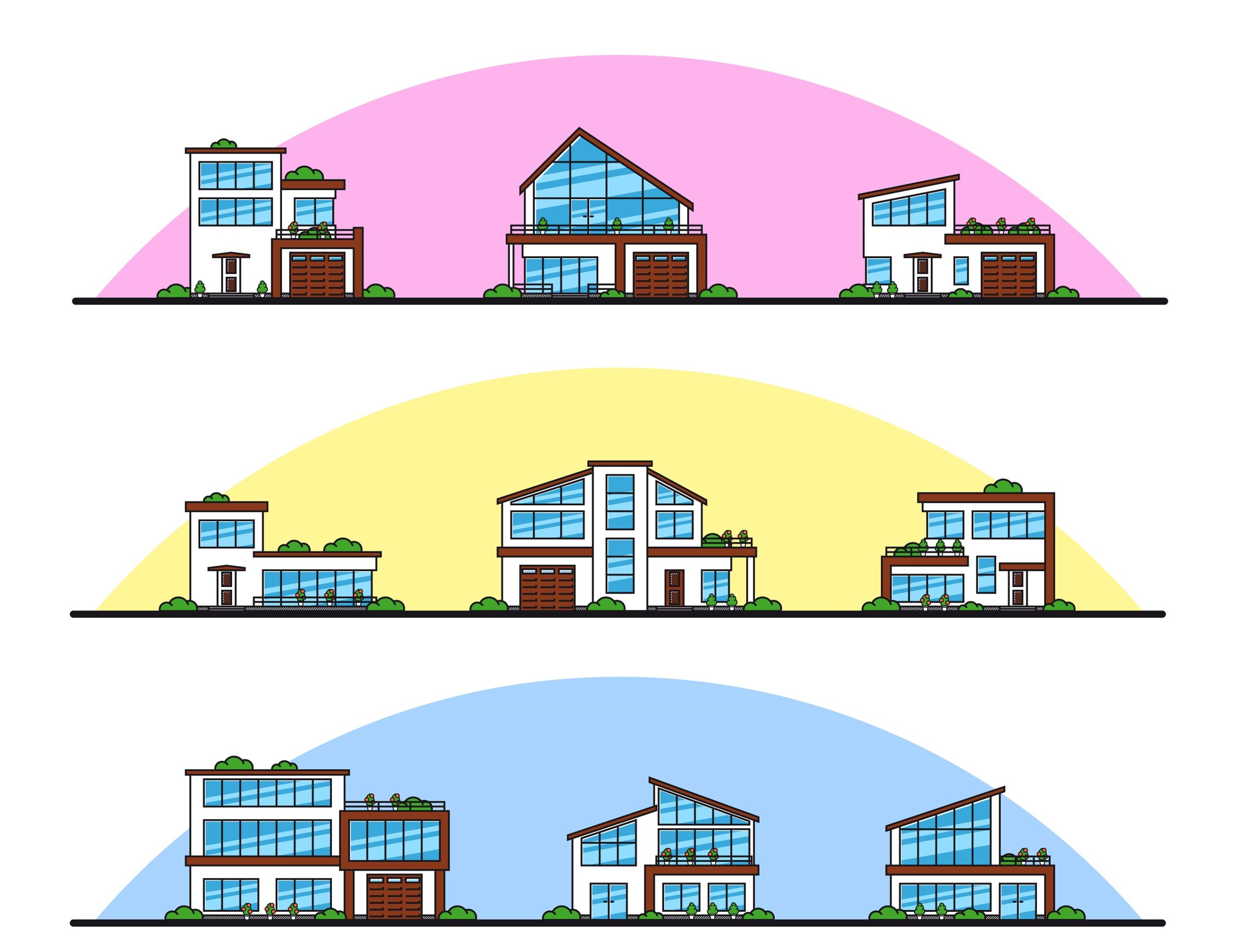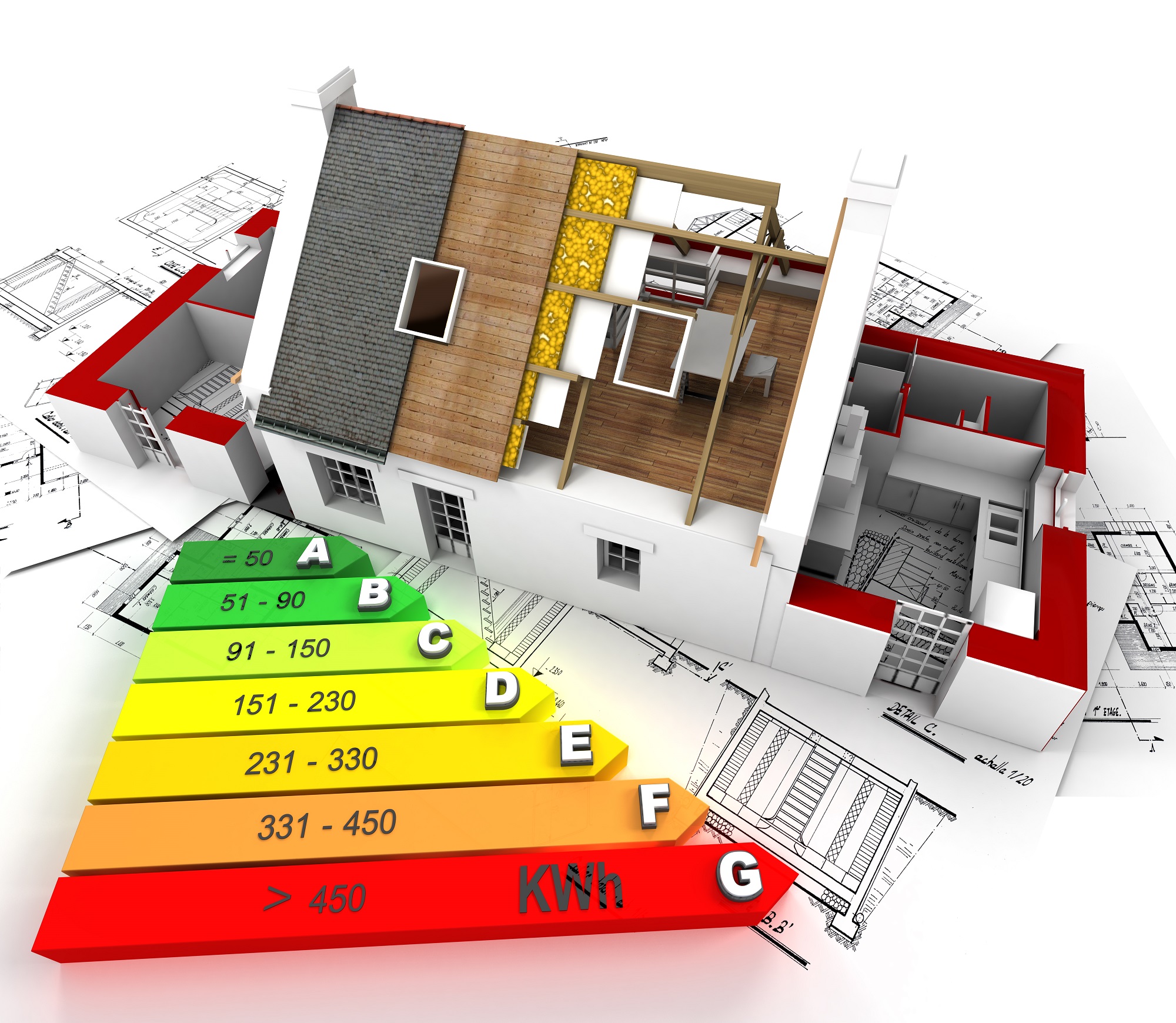The types of construction used to build houses entirely depend on the climate. The material used to build a house in Himachal may not work in Jaipur. This applies to every aspect of the architecture, and the roof is no exception. Therefore, cool roofs have gained a lot of popularity in warmer, i.e., tropical climates like India, especially with the functionality and utility they bring along.
Investing in a cool roof brings a double benefit:
- High Solar Reflectance: It reflects away a percentage of UV radiation, infrared and visible radiation from the sun, thereby reducing the heat absorbed by the heating.
- High Thermal Emittance: It releases or emits the heat that the building retains, too. The building cools down much faster as a result.
(Source: Estrella Roofing LLC)
Cool roofing materials provide a barrier against significant weather changes. In India, with our strong sunlight and intense UV rays, elements that ensure roof cooling are essential for a comfortable life and a secure home. Therefore, ensuring that the builders incorporate it into their planning process ensures that you get better results. It is easier to integrate cool roof technology in the construction phase.
There are also several other benefits to cool roofs.
- Lower electricity bills
- Better indoor comfort especially in non-air-conditioned spaces
- Increased roof durability
- Lowered local air temperature
- Lower electricity demands
- Fewer power outages
- Reduction in emissions such as carbon dioxide, nitrous oxides, sulfur dioxide, etc. due to lower energy consumption and demand
Some of the most popular materials used for cool roofing are:
Terracotta/Clay Tiles
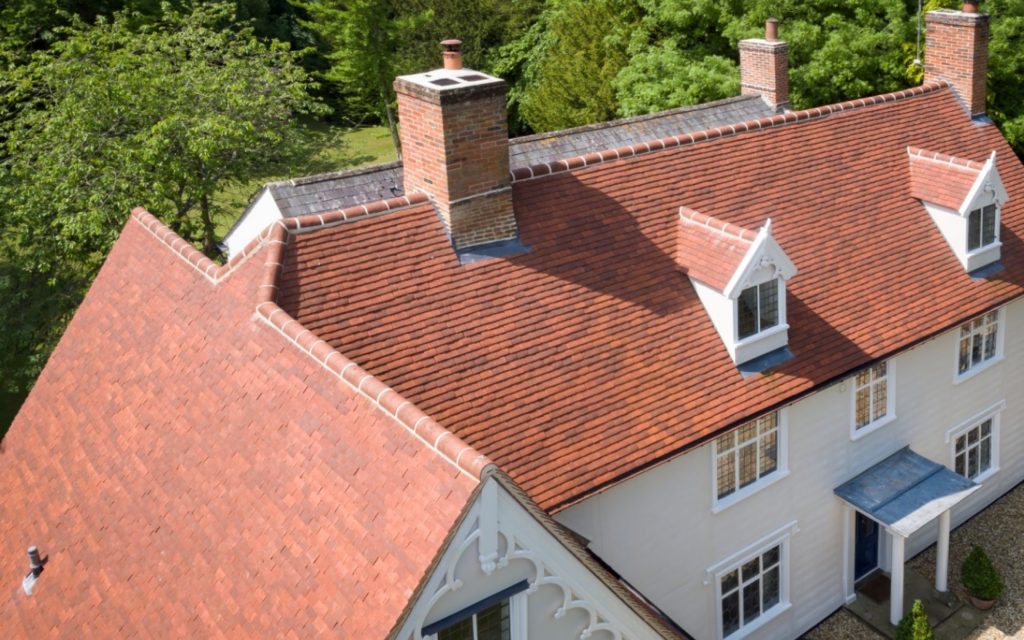
Terracotta and clay tiles are known for their weather-resistant properties. Clay tiles can even last up to 100 years without severe damage or wear and tear. Additionally, they look very stylish and aesthetic, especially if your design is more rustic. Meanwhile, their curved shape allows air circulation underneath the tile, cooling the roof beneath.
Wienerberger is Europe’s largest clay roof tile manufacturer
Reflective Metal Roofing
(Source: Metal Roofing Alliance)
Reflective metal roofing is one of the most effective energy-saving methods of roofing. This cool roofing material uses cool pigments in the paint as a solar reflectance tactic, which simultaneously lowers the surface temperature of the roof, keeping the insides much cooler.
Metals like aluminium, steel, and copper are also popular roof covers. When these versatile and highly durable sheets are placed over the existing roof, they create airways. By allowing for such air circulation, the indoor temperature lowers. When combined with the above reflective coating, this can offer up to 70% solar reflectance.
Reflective Roof Coatings
While reflective metal roofing uses metallic paint, regular paint can be just as effective. White roof coating, for example, reflects up to 80% of solar energy. However, you may choose a different colour depending on the aesthetic of your home. As long as it is a light colour, you get the same 80% solar reflectance while dark colours absorb more heat, making your house hotter.
Concrete Tiles
(Source: Architizer)
While concrete may seem perfect at trapping heat, it performs similarly to terracotta tiles. The thick concrete takes much longer to heat up, therefore providing an effective barrier thoroughly. Additionally, like terracotta, they are also baked, thus increasing their heat resistance. When placed on the roof, the wave-like pattern ensures that airflow is possible, improving circulation and lowering indoor temperature.
Membrane Roofing
Often called “rubber roofing”, membrane roofing or EPDM (Ethylene Propylene Diene Monomer) membrane roofing is usually made from a flexible, sturdy, waterproof combination of polyester, felt or fibreglass, and connected with asphalt, polymer or synthetic rubber. This composition makes EPDM particularly resistant to solar emissions while being produced at a low cost.
Studies have shown that a mass shift towards EPDM membrane roofing can have an environmental impact, such as a 4% decrease in local rainfall.
Solar Panels
Solar panels have several advantages. Being a renewable energy source, they are a sustainable alternative for most people looking to live more environmentally-friendly lives. However, the cost of installing ranges between Rs. 40,000 – 6 lakhs. This is more expensive than most cool roof solutions. Therefore, a lot of people opt instead for the roof cooling while choosing other, more affordable methods to live more sustainably.
Conclusion
(Source: Sheffield Metals)
Selecting the right cool roofing materials is crucial for a comfortable, energy-efficient home. As global warming looms larger, having eco-friendly methods of reducing the threats to existence ensures you stay ahead of the curve.
Wienerberger India offers roofing solutions that ensure protection from heat and moisture with long-lasting results. Our systems provide roofing over 1500 homes in South India. Their quick and easy installation makes them extremely desirable for home-constructions. Additionally, we include underlays, insulating materials and other such accessories.


